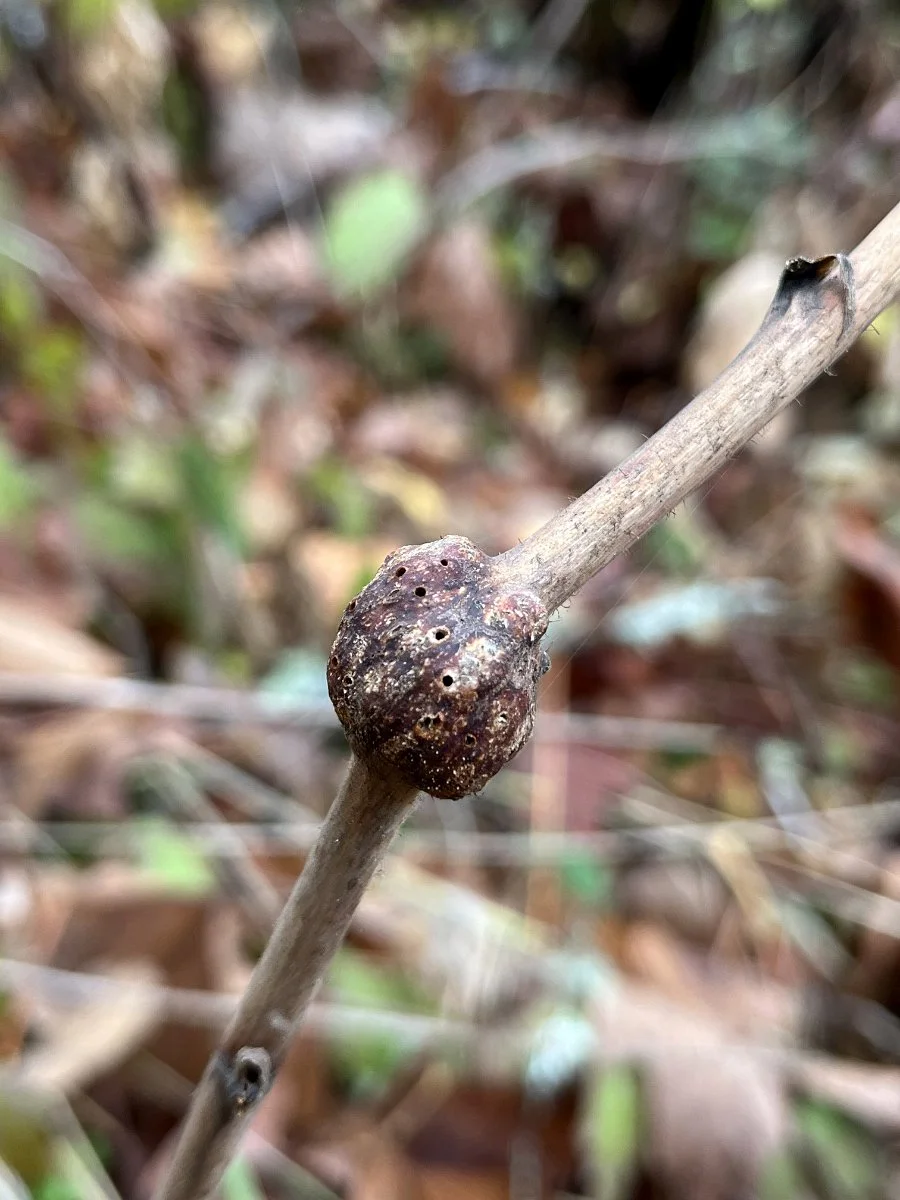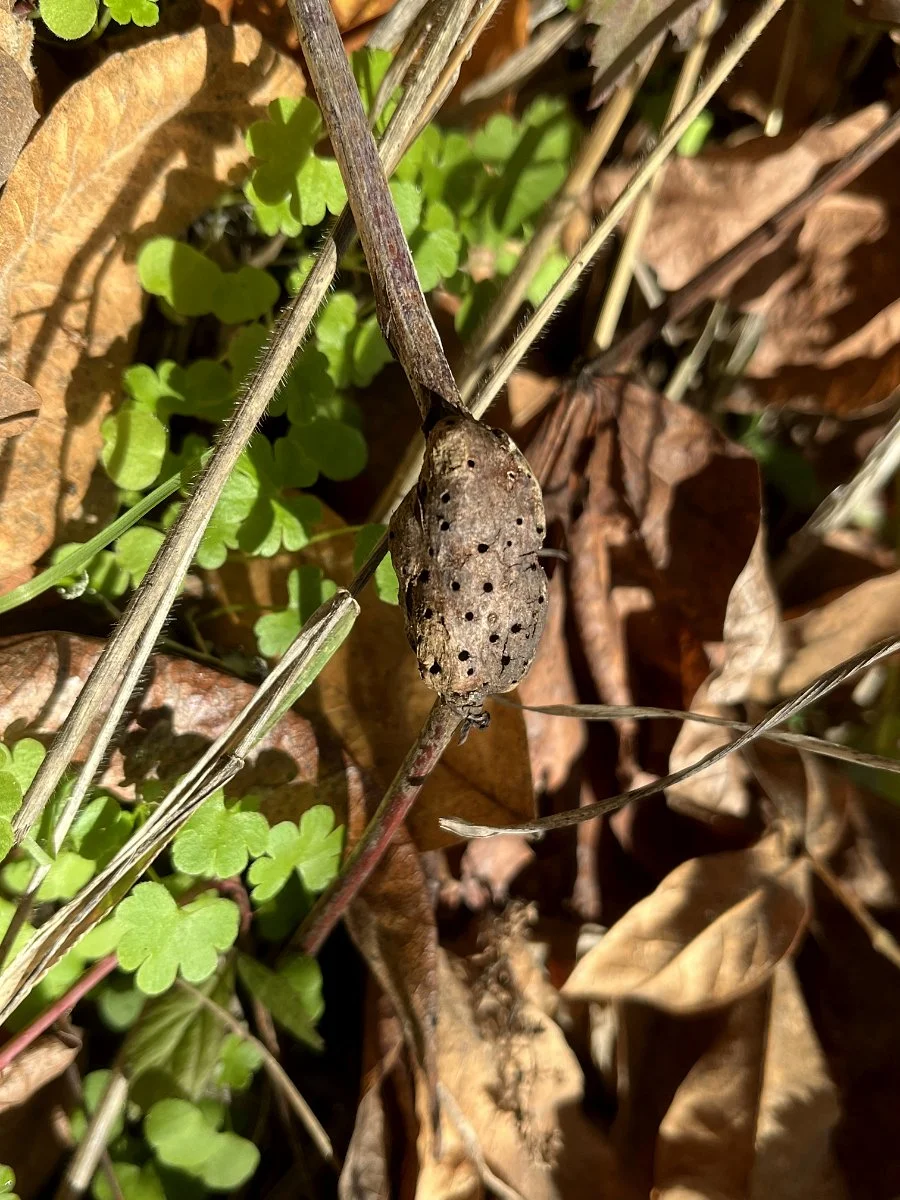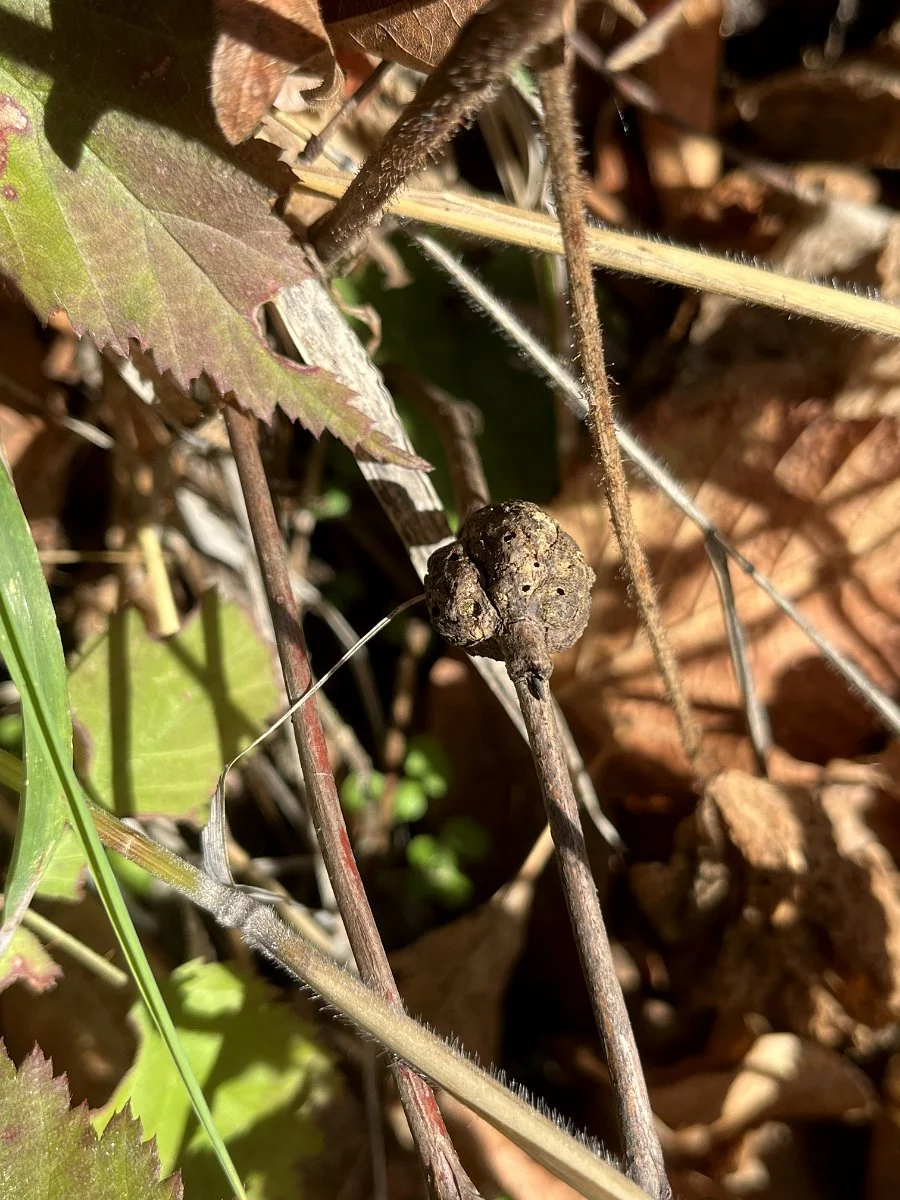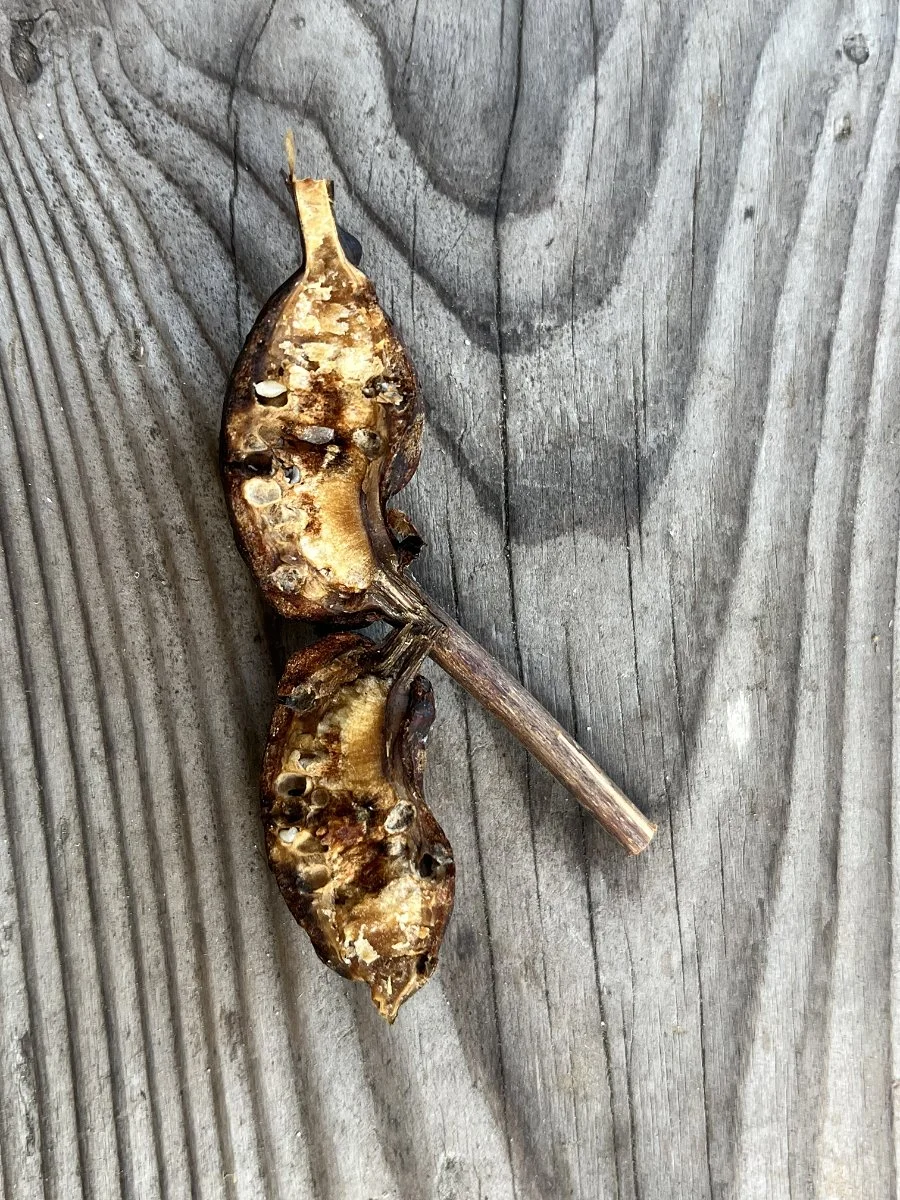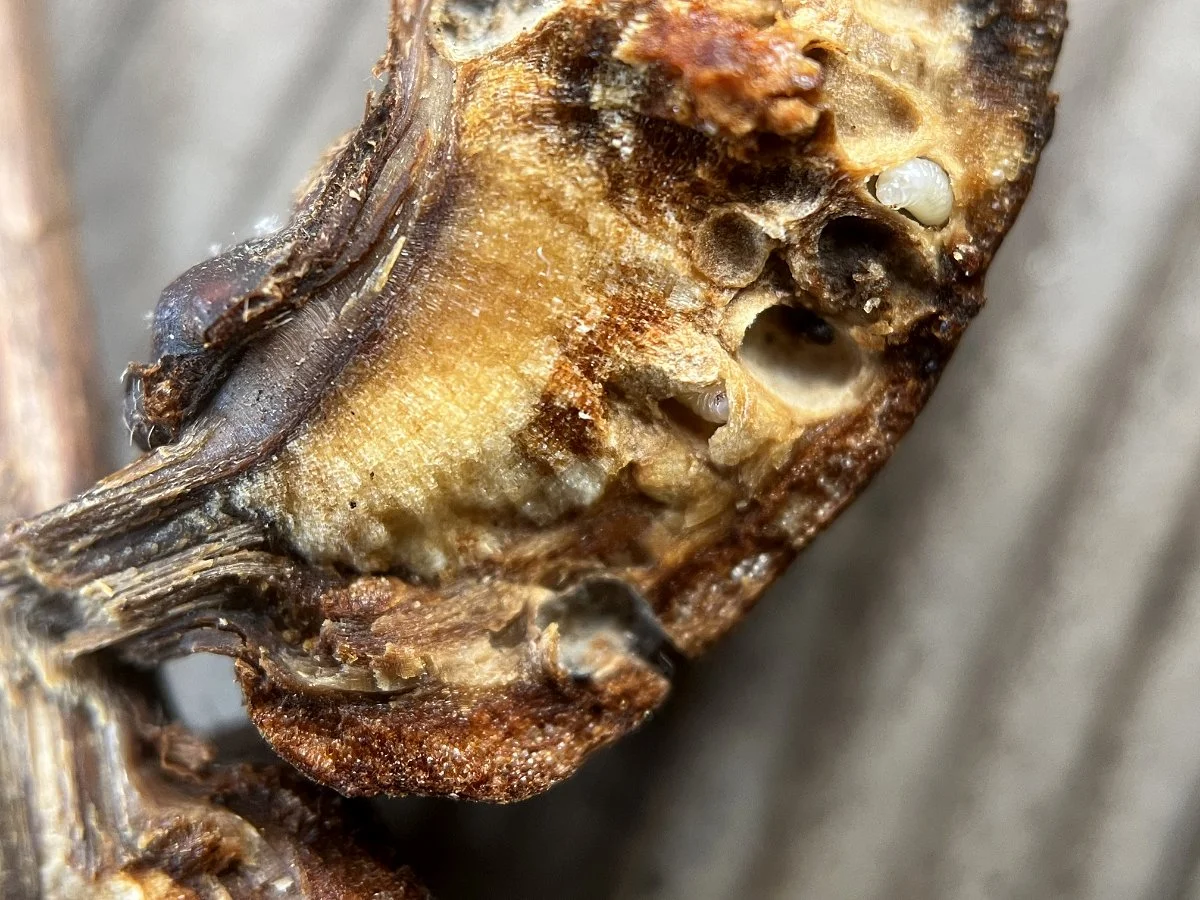While out walking in the arboretum the other day, I got caught in a little eddy of flitting and chirping. I was on the pond lily trail and a mixed flock of birds was excitedly gobbling down woolly aphids. There were chickadees, ruby-crowned and golden-crowned kinglets, brown creepers and Bewick’s wrens. As I turned to watch a ruby-crowned kinglet bouncing between the branches near the ground, I noticed a little knobby knuckle on a small stem. It was firm and woody and had small holes on its surface as if an insect had chewed its way out. As I looked closer at the surrounding vegetation, I saw a few more and realized that they were on thimbleberry stems. I looked them up to find that they were thimbleberry galls created by the wasp Diastrophus kincaidii.
I found an informative paper online written by James K. Wangberg called “Biology of the Tliimbleberry Gallmaker Diastrophus kincaidii.” It was published in 1975 in the journal The Pan-Pacific Entomologist. When writing about the life cycle of D. kincaidi, he writes that the adults emerge from the gall in the spring by chewing their way out. I cut one open to see what it looked like inside and found that it still had tiny larvae inside. When I saw this gall riddled with holes, I thought that the wasps had already left. I thought that perhaps that some of the larvae were still developing and hadn’t emerged from the gall yet. I hadn’t read Wangberg’s study yet, so I didn’t know that the adults chew their way out in the spring. So why did these galls have holes in them?
At the end of Wangberg’s article he had a section called “Insect Associates,” which states: “Ten species of parasitic hymenopterans were found associated with D. kincaidii on thimbleberry. Most are parasites of D. kincaidii but some are hyperparasites. Parasitism of D. kincaidii larvae is extensive during the summer and oftentimes only those individuals deepest within the gall tissue escape attack. The parasitic species emerge in succession throughout the summer and D. kincaidii is subject to parasitism for its entire larval life. In addition, an inquilinous weevil and an undetermined cecidomyiid midge were occasionally present within galls.”
Its a wonder that any of the original gall wasp D. kincaidii survive to adulthood with that many parasites. So were the holes created by the parasites piercing the gall and laying eggs or was it from them chewing their way out? My guess is that it was from chewing their way out. The gall is created on new, green stems and becomes woody as the season progresses into fall. I imagine the parasitic wasps pierced the gall when it was softer and green and the nice round hole was neatly made during exiting. So, are the larvae that are still inside the gall I cut open surviving D. kincaidii or one of the parasites?
I’ll leave you with a quote by Ken Kesey that is on a memorial stone at the arboretum: “The answer is never the answer. What's really interesting is the mystery. If you seek the mystery instead of the answer, you'll always be seeking. I've never seen anybody really find the answer. They think they have, so they stop thinking. But the job is to seek mystery, evoke mystery, plant a garden in which strange plants grow and mysteries bloom. The need for mystery is greater than the need for an answer.”
Vocabulary
inquiline: an animal exploiting the living space of another, e.g. an insect that lays its eggs in a gall produced by another.
Resource
Wangberg, James K. “Biology of the Tliimbleberry Gallmaker Diastrophus Kincaidii.” The Pan-Pacific Entomologist, vol. 51, no. 1, Jan. 1975, pp. 39–48.
Link to article

